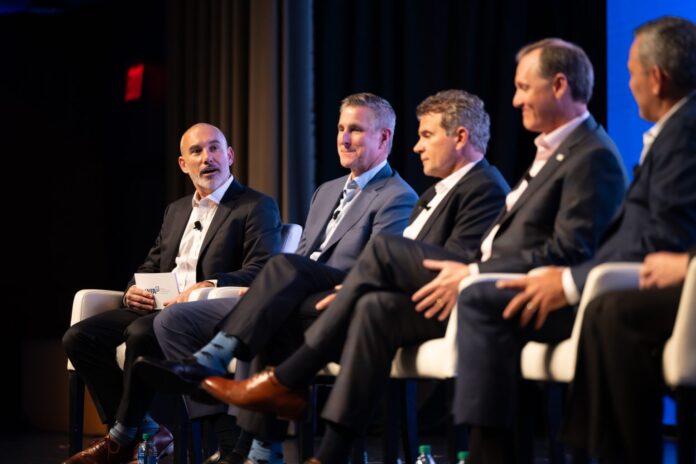While mobile network operators clamor for additional spectrum in order to meet demand, tower companies are in a win-win situation. They benefit whether that demand is met by additional spectrum deployments or via network densification.
During a panel at last week’s Connect(X) event, infrastructure company C-level executives were asked about the biggest change in their industry over time, and their current biggest challenge.
The biggest change? According to Mike Kavanagh, EVP and COO of towers for Crown Castle, the tower industry has shifted from a focus on access and coverage, to one that centers on meeting capacity demand.
“We’re seeing a huge shift to bandwidth consumption, and that’s really changed the ecosystem and the demands on the network—and it’s leading to more opportunities, whether it’s densification or expansion,” he said. “We still have some work to do on coverage … but [consumption has] really fundamentally changed the way we think about the business and the growth trajectory of the business.”
Ron Bizik, president and CEO of Vertical Bridge, said that the industry had, from its early days, gone from a place of uncertainty to certainty and overall stability. Capital spending by the carrier varies over the years, and the high growth in early 5G deployments has been followed by a return to a more normal capital expenditure pace.
Bud Noel, EVP and president of the U.S. tower division of American Tower, said that based on what his company is seeing, 5G deployments are about mid-cycle, with about 50+% of the portfolio being 5G-capable. Most of the application volume that the company is seeing now is still getting 5G deployed, although Noel said that American Tower is also seeing “elements of densification” as well. “This is no different than other deployment activities. It ebbs and flows,” he said. “I think ’23 was an ebb, it’s starting to pick back up and we’re optimistic that ’24 will be sequentially better.”
That challenges in the tower space? Higher interest rates, meaning that the cost of capital is higher, but also the lack of a spectrum pipeline that would give a clearer view of the path ahead for their mobile network operator customers. Bizik also said that until the carriers figure out a way to do more monetization of 5G, “it’s going to be a little bit slower than we expected.”
However, each of the executives on the panel more or less agreed with how Bizik laid out their industry’s situation: “Absent spectrum, infrastructure is even more valuable,” he said.
“They need more spectrum, and while that’s the challenge for them, but I think it’s an opportunity for us,” Bizik added at one point. “Whether they get spectrum, we’ll see that manifest itself in new builds, and if they don’t, I think there will be more densification throughout the network.”
The most likely candidate to propel even more intense data usage is artificial intelligence, which has the potential to demand massive amounts of data as it generates more photos and video as well as text. And carriers don’t have control of how, or how quickly AI usage will evolve.
But even if the next boost in data use doesn’t come from AI, it is still expected to come. Which is good news for the infrastructure ecosystem.
“We’ve seen that ebb and flow over time, but the constant, underlying theme is the growth in consumption. Bandwidth consumption continues to grow. And there is not a single person you can find who would suggest that it’s not going to continue to grow at a rapid pace,” said Kavanagh. “That’s what gives us confidence, because we know that the only way to solve that is through deploying more equipment, deploying more spectrum and all of that is relying on the infrastructure that our companies provide.”

